A WEEK IN PUGLIA - PART TWO
OSTUNI
We pick up where we left off on A Week in Puglia - Part I with Ostuni, our last destination in Brindisi. A stunning medieval whitewashed town set upon a labyrinth of cobblestone streets, Ostuni can be enjoyed in a day or two. I highly recommend taking a guided tuk-tuk tour, as there is so much fascinating history you will not want to miss. One of the first landmarks we visited was the Santa Maria Assunta Cathedral, which combines Romanesque, Gothic, and Byzantine design. We discovered why the ornate rose window is glass-free, the meaning behind its intricate symbols, and why the church’s altar is off-center. Another Ostuni treasure is the less opulent but highly unusual Baroque Church of San Vito Martire, now an archaeological museum with impressive artifacts, some dating back 2600 years. Allow yourself time to stroll the charming maze of medieval streets peppered with restaurants, shops, cafes, and bars. Ostuni is most definitely a must when in Puglia.



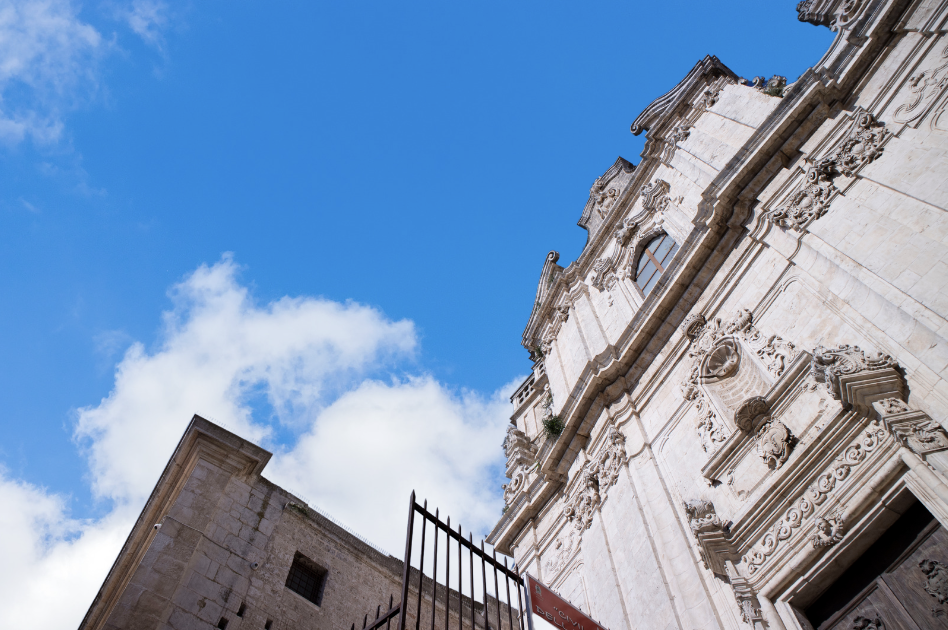
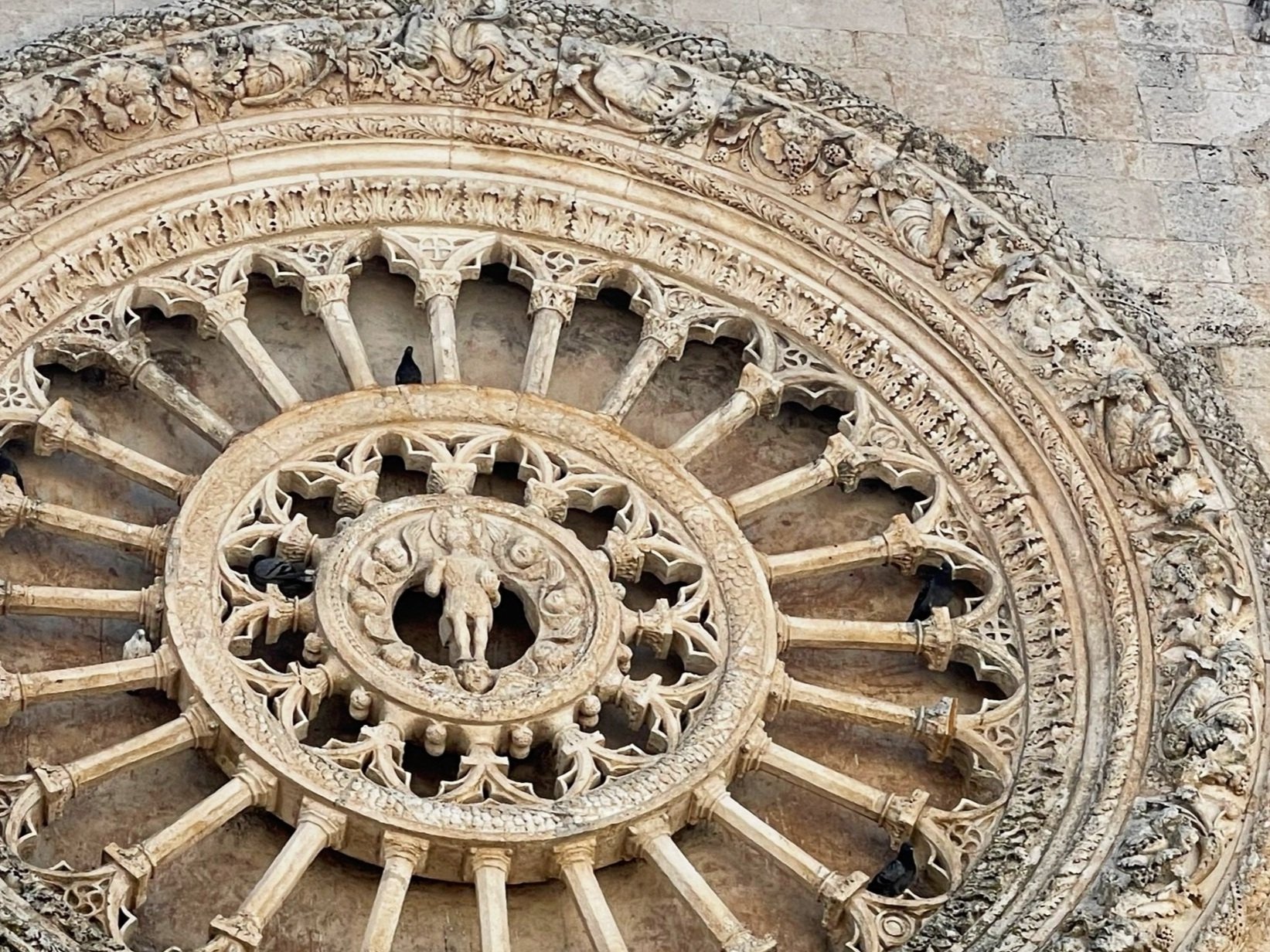

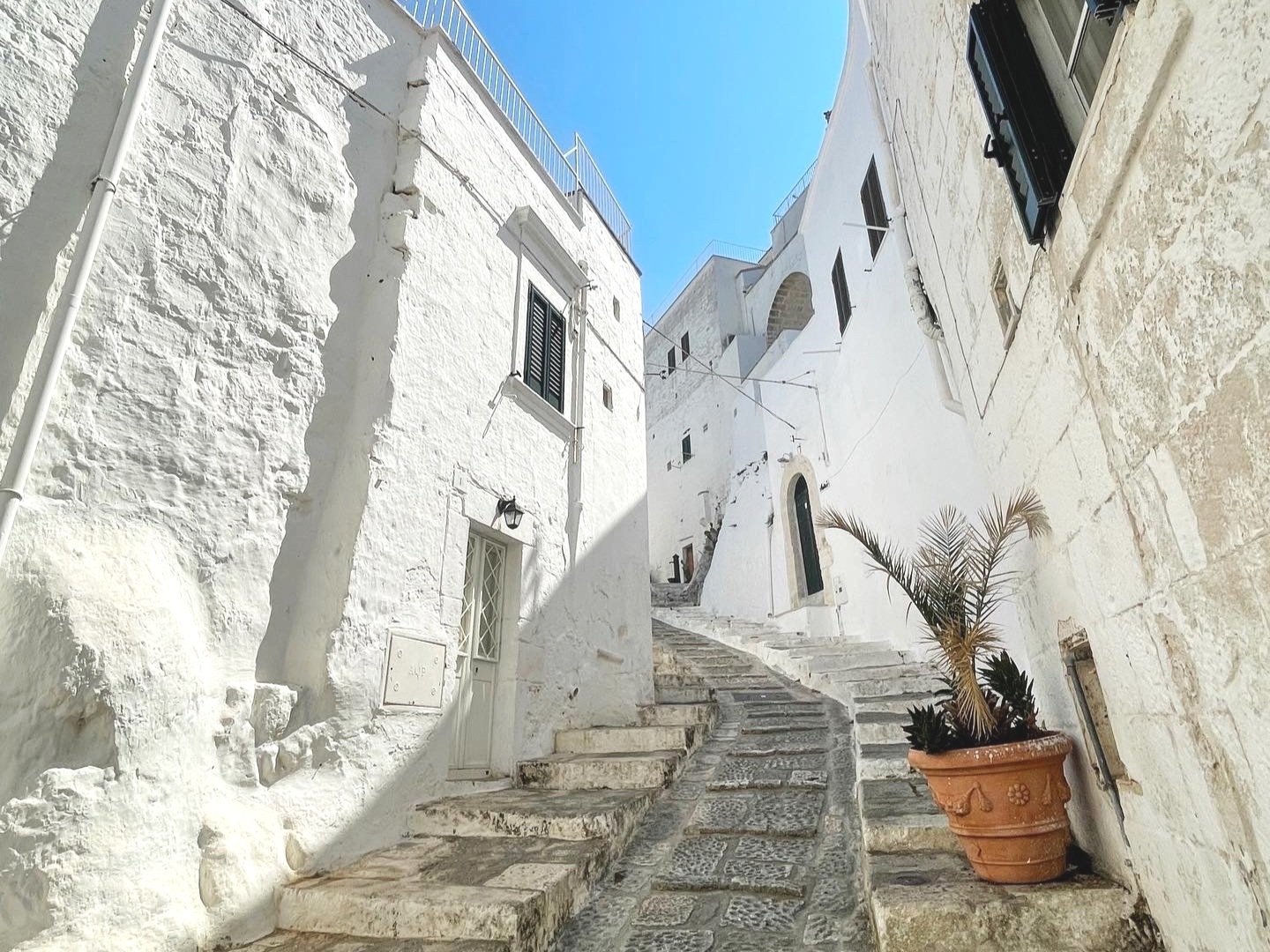
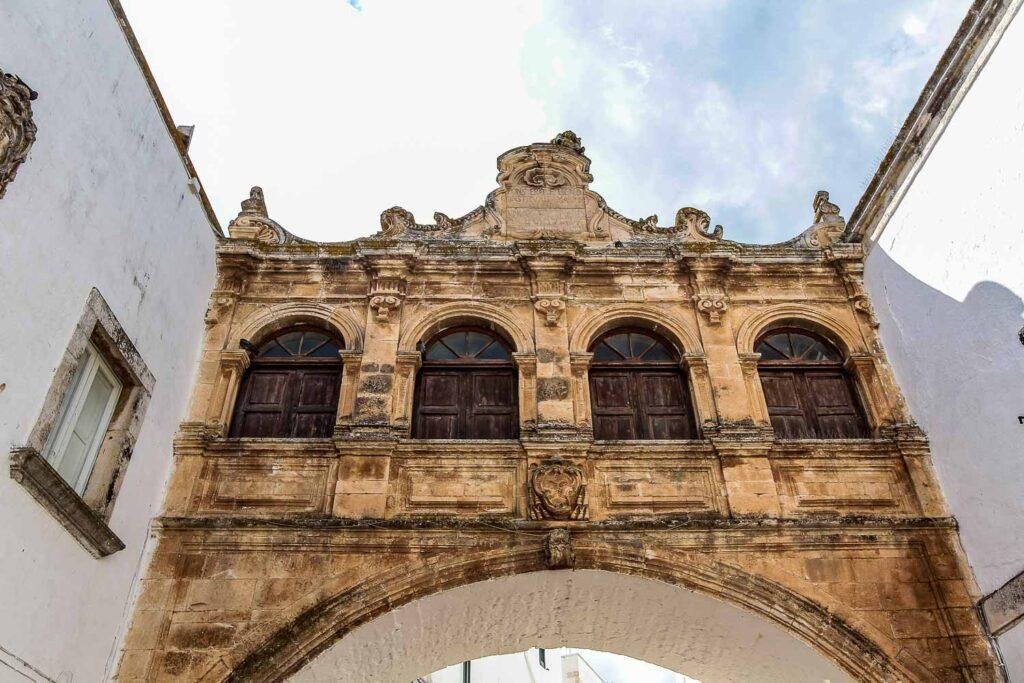
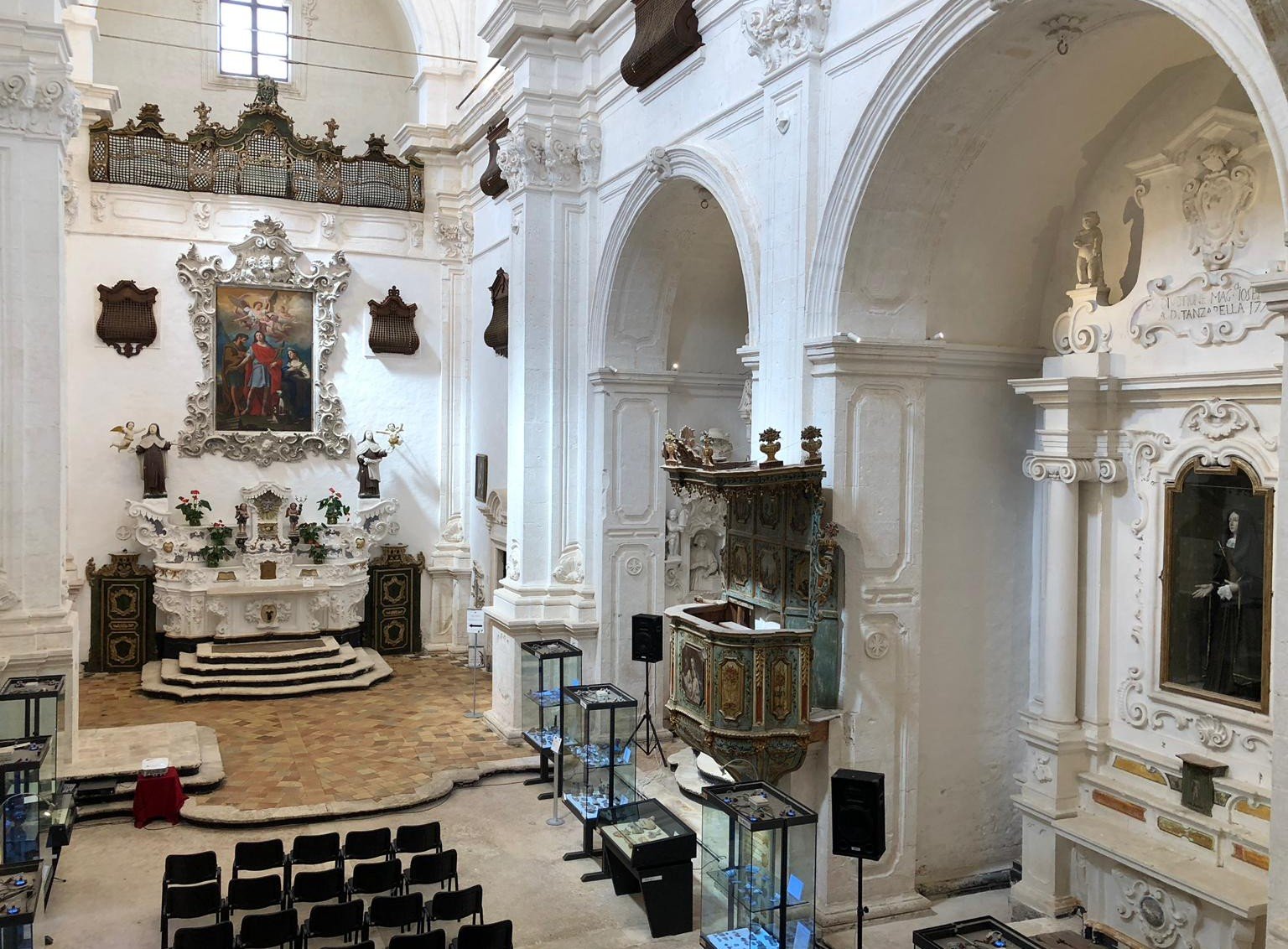
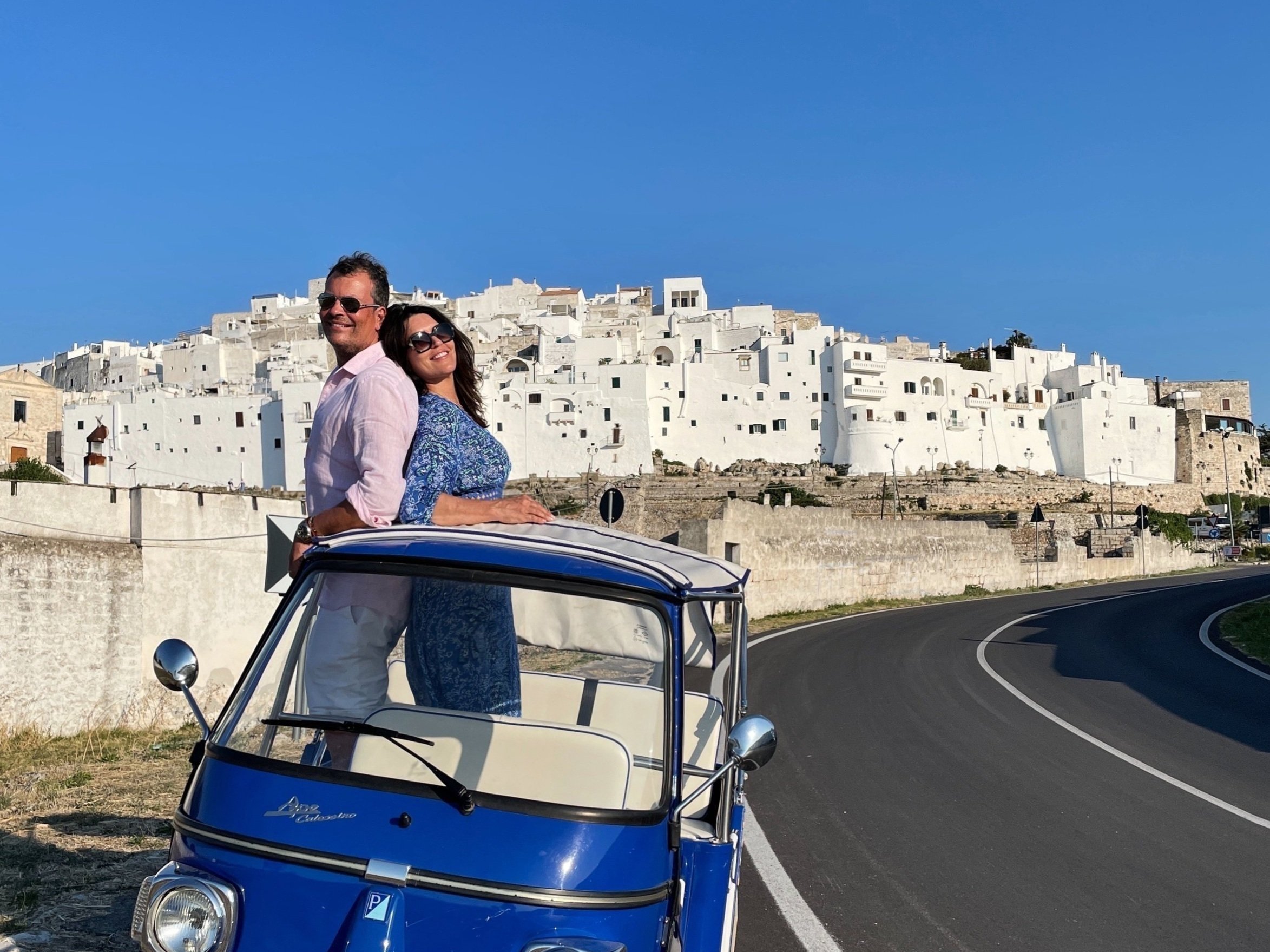
Puglia produces half of all the olive oil in Italy, so it is no surprise that there are miles upon miles of olive trees. On our way to Lecce, we went to the Masseria Brancati, hoping to see Il Grande Vecchio (The Great Elder), the oldest olive tree in the country, estimated to be more than 3000 years old. Unfortunately, it was not open for a full tour and tasting when we arrived. However, we saw the ever-elusive elder’s “cousin,” about 2000 years old (second slide) and were amazed to discover that these millennials still produce olives! Make sure to call in advance for a tour.
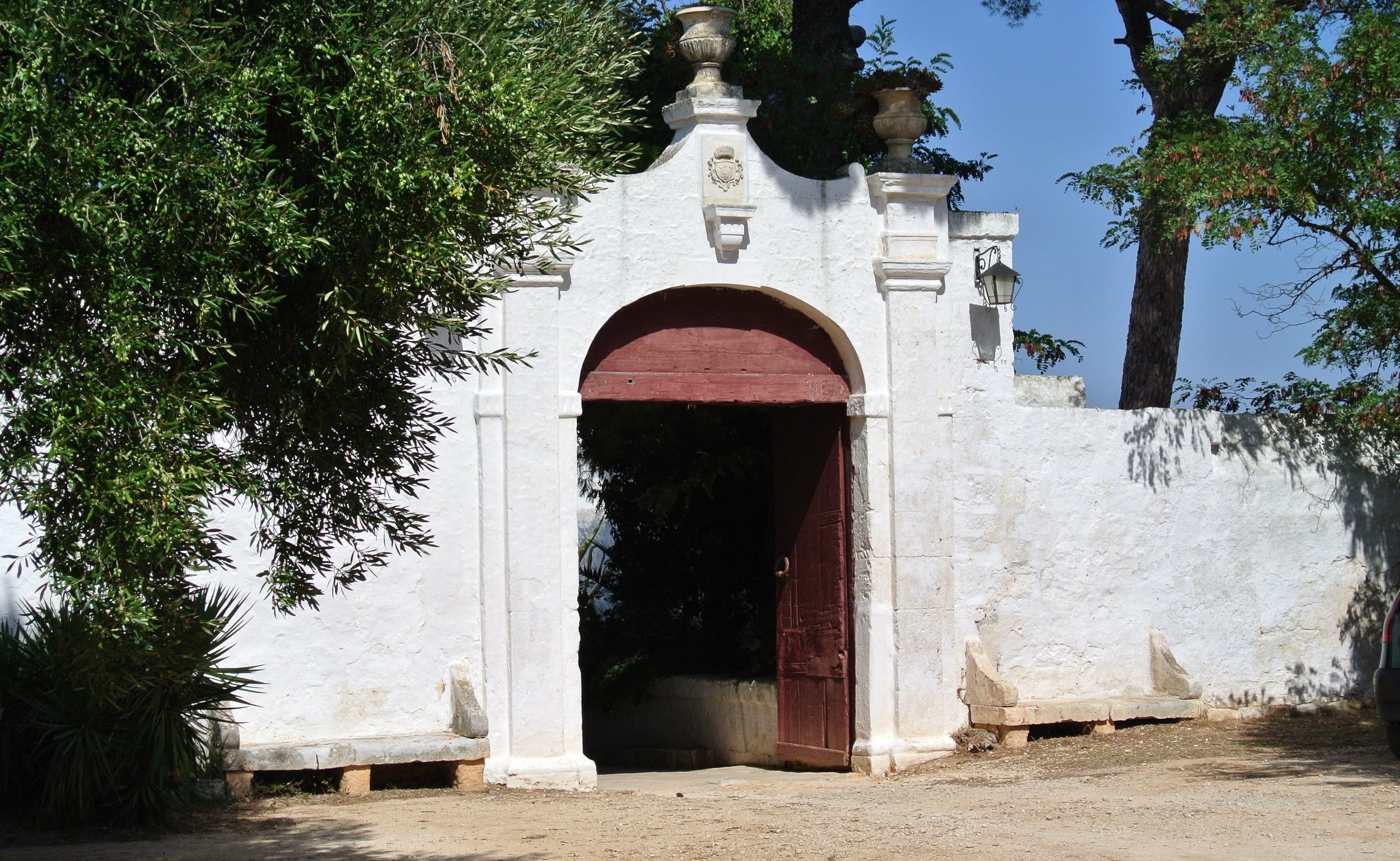


LECCE
Often hailed as “the Florence” of southern Italy, Lecce is an excellent example of Italian Baroque art and architecture. The elegant amber hue predominating throughout the city is no accident. In fact, “Lecce” is a type of honey-colored, easy-to-process limestone that artists used ubiquitously throughout the region because it was readily available. The gentle stone seemingly changes color throughout the day, making Salento (the southernmost part of Puglia) different from any other place in the world.
Our hotel was so well situated it was easy to stumble upon many historic landmarks by simply strolling the city streets.
Basilica di Santa Croce: To say the church is stunning would be an understatement. The facade of this 17th century masterpiece is truly astounding and well worth visiting not only during the day but also at dusk for a completely different experience.
Piazza del Duomo: One of many beautiful limestone squares in Lecce, home to another important church, the Cattedrale dell’Assunzione della Virgine.
Roman Amphitheatre: As often occurs in Italian cities, the structure, which dates back to the I and the II century AD, was discovered by chance in the early 1900’s.
Porta Napoli: A landmark defensive archway featuring four ornate columns and pediment featuring the insignia of Charles V and Lecce.
Sedile: Located near the amphitheatre in the middle of Lecce’s main town square is the exquisitely restored building ( lead slide below) that houses the Tourist Information office of Lecce.

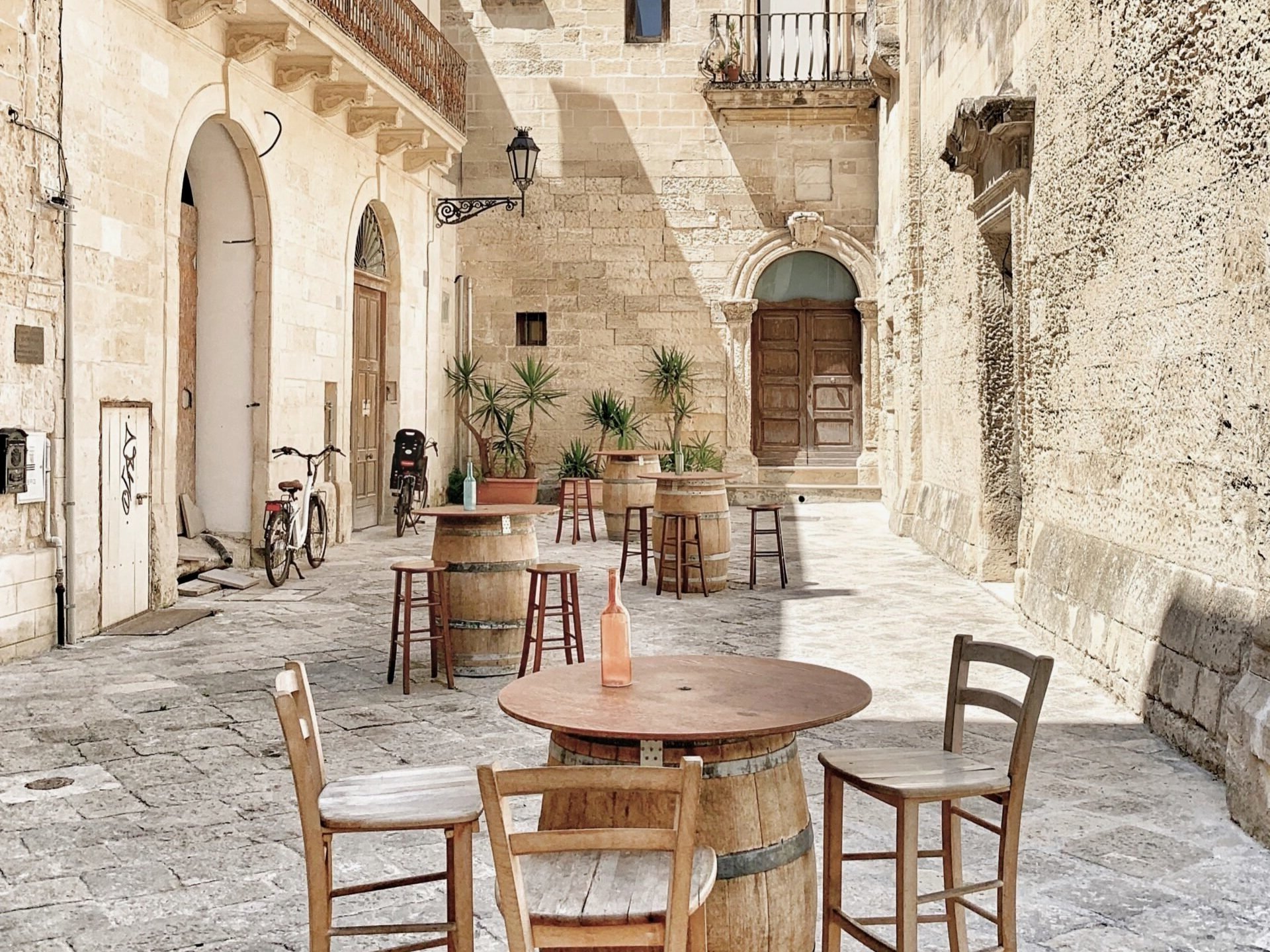

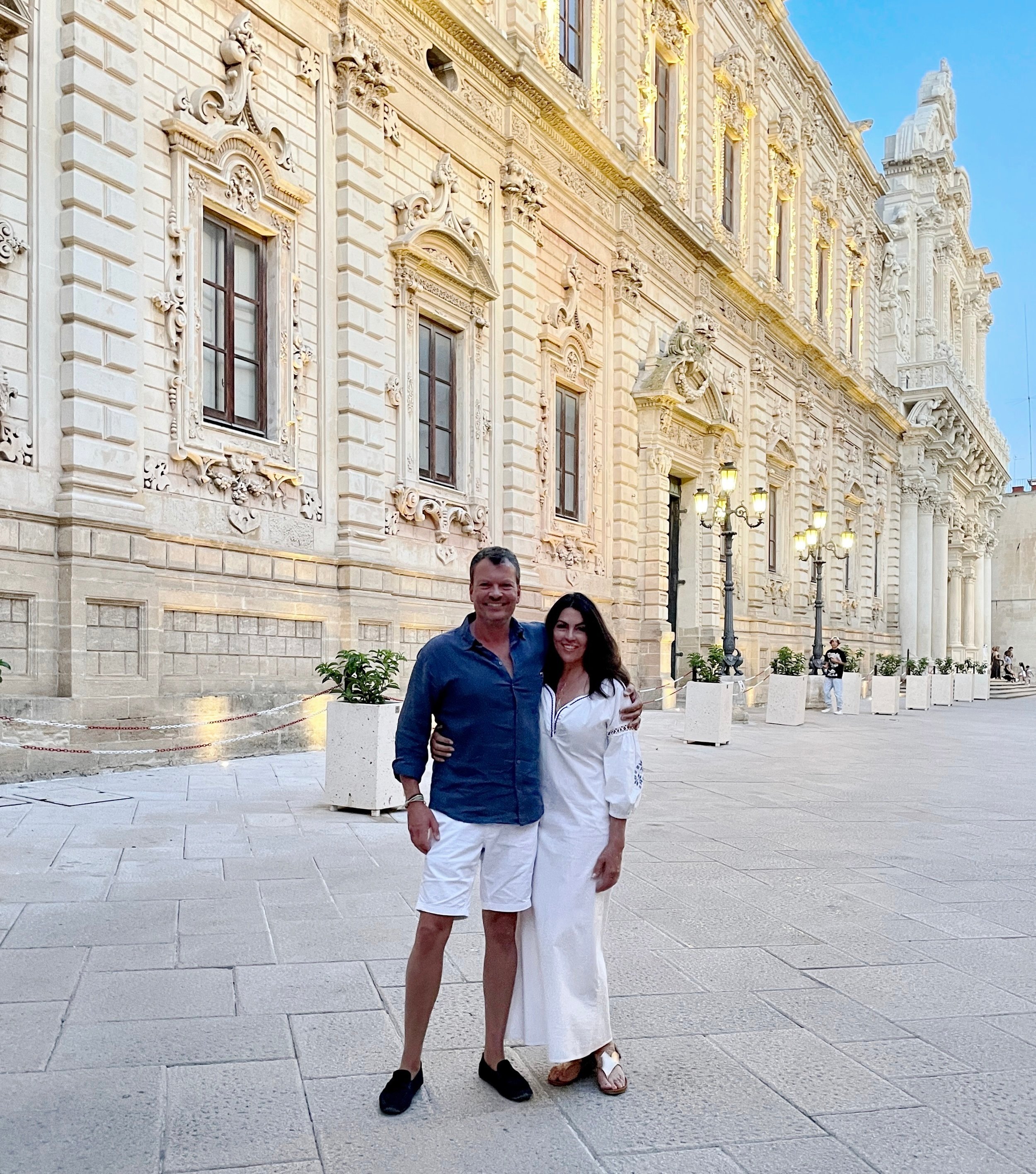
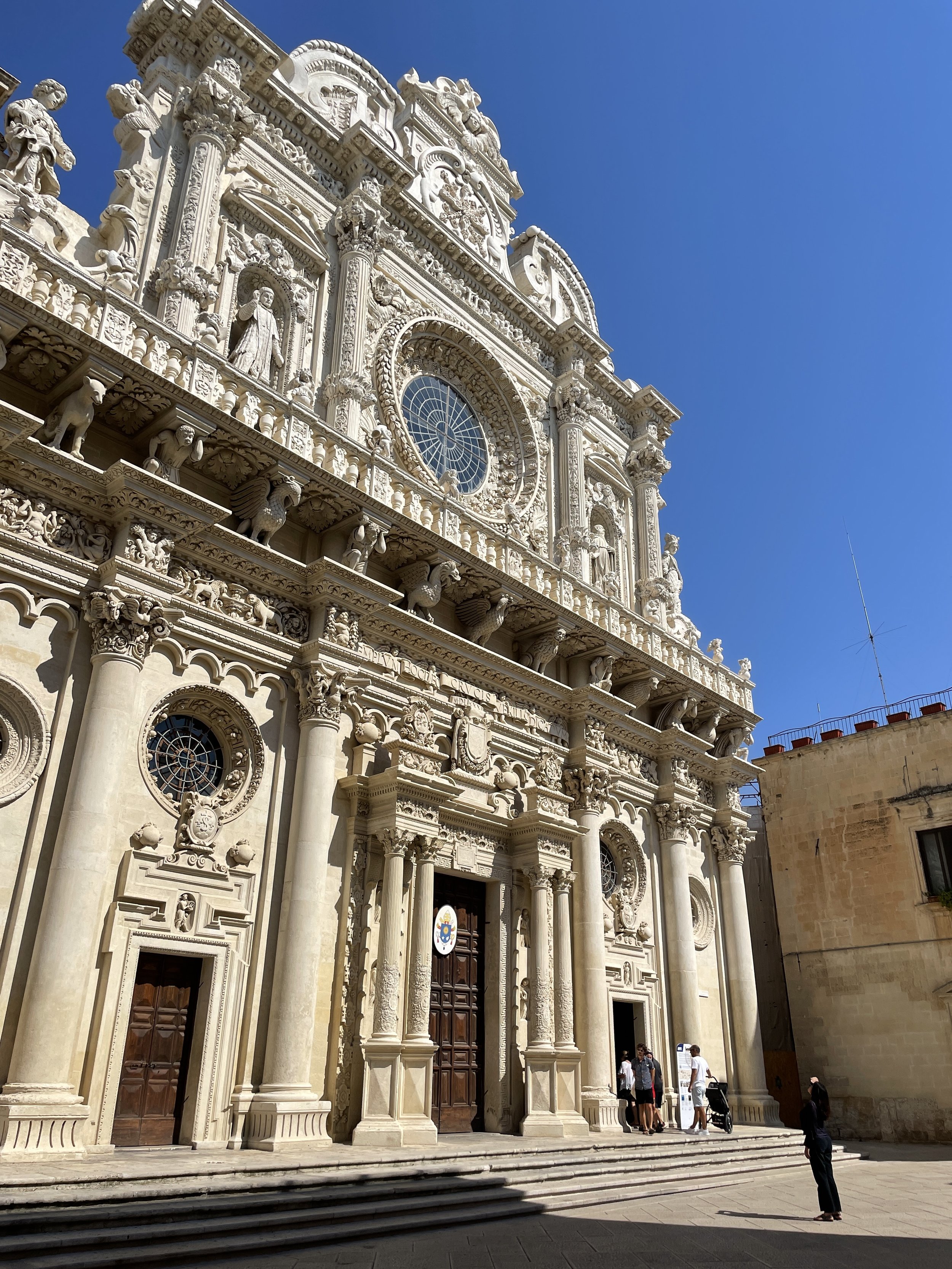
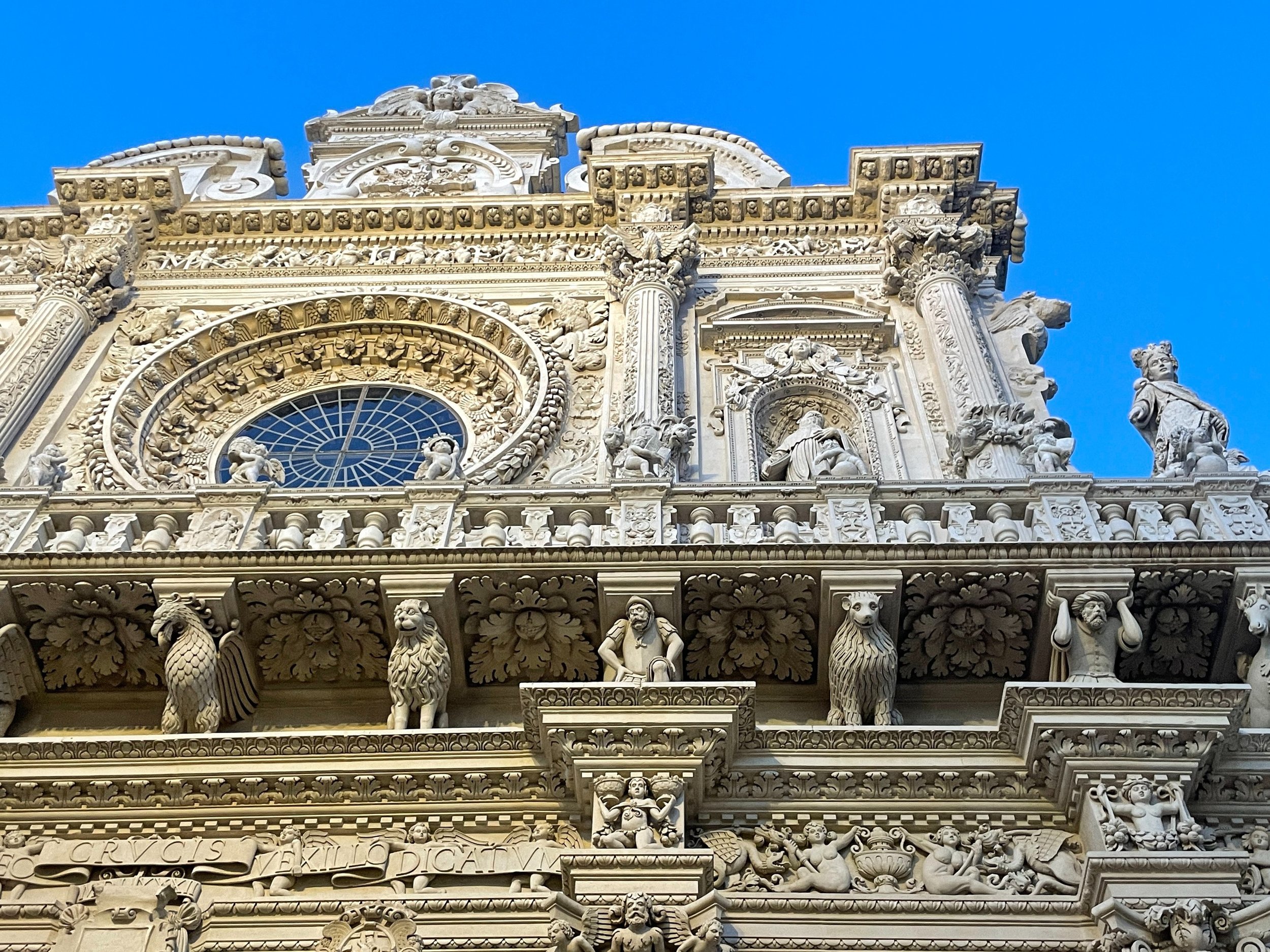
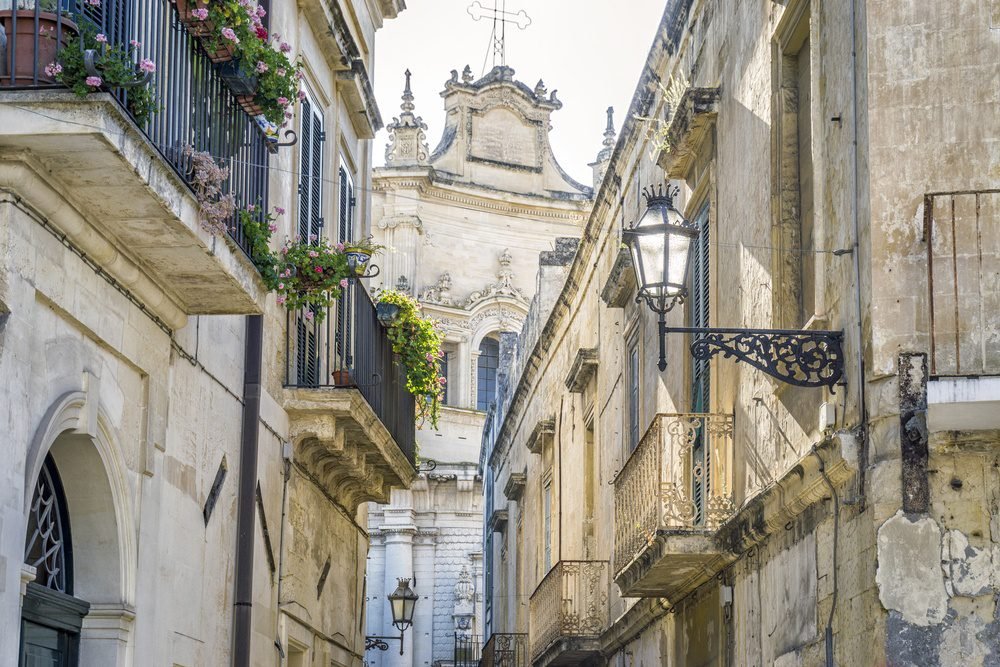
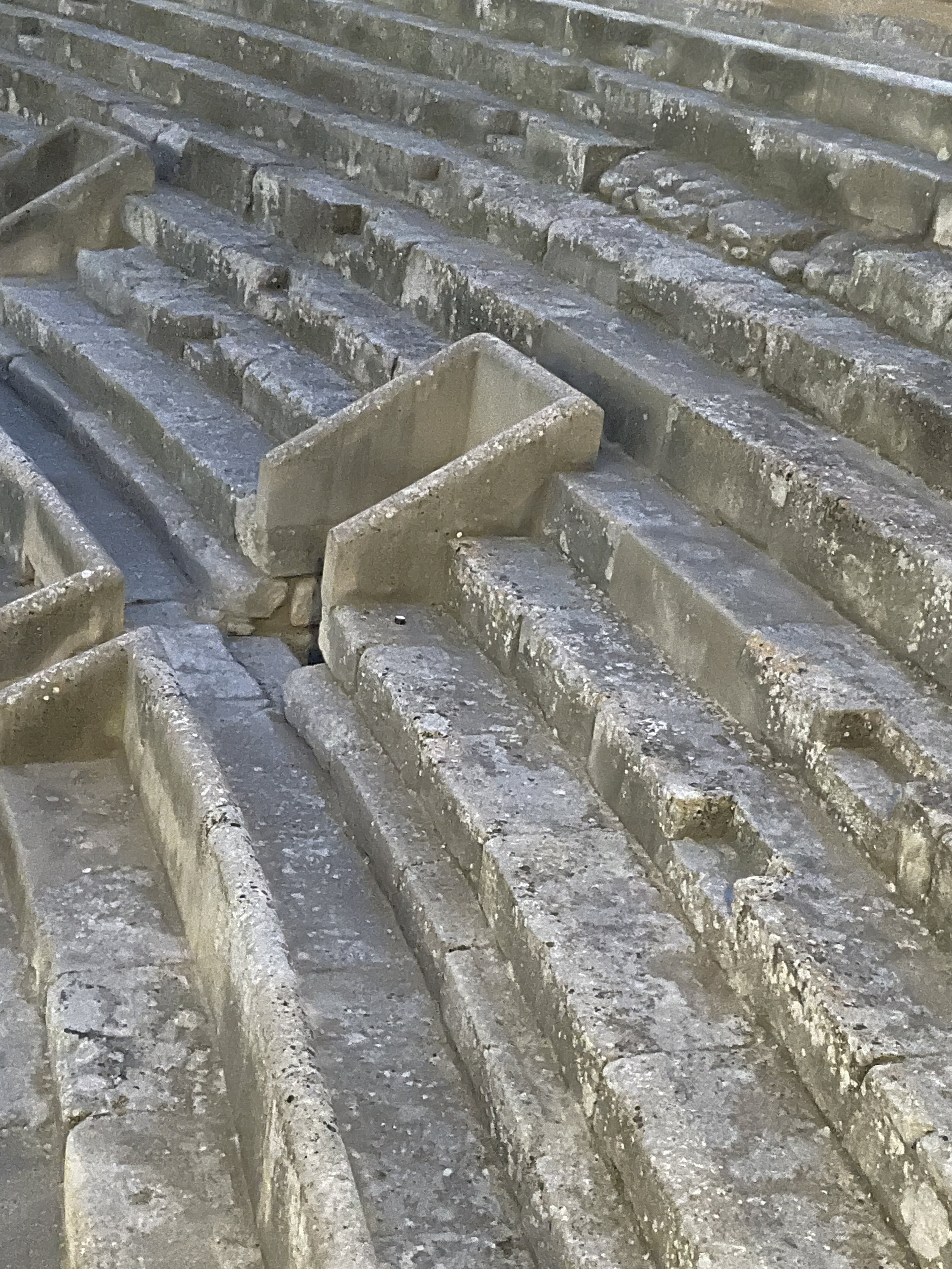
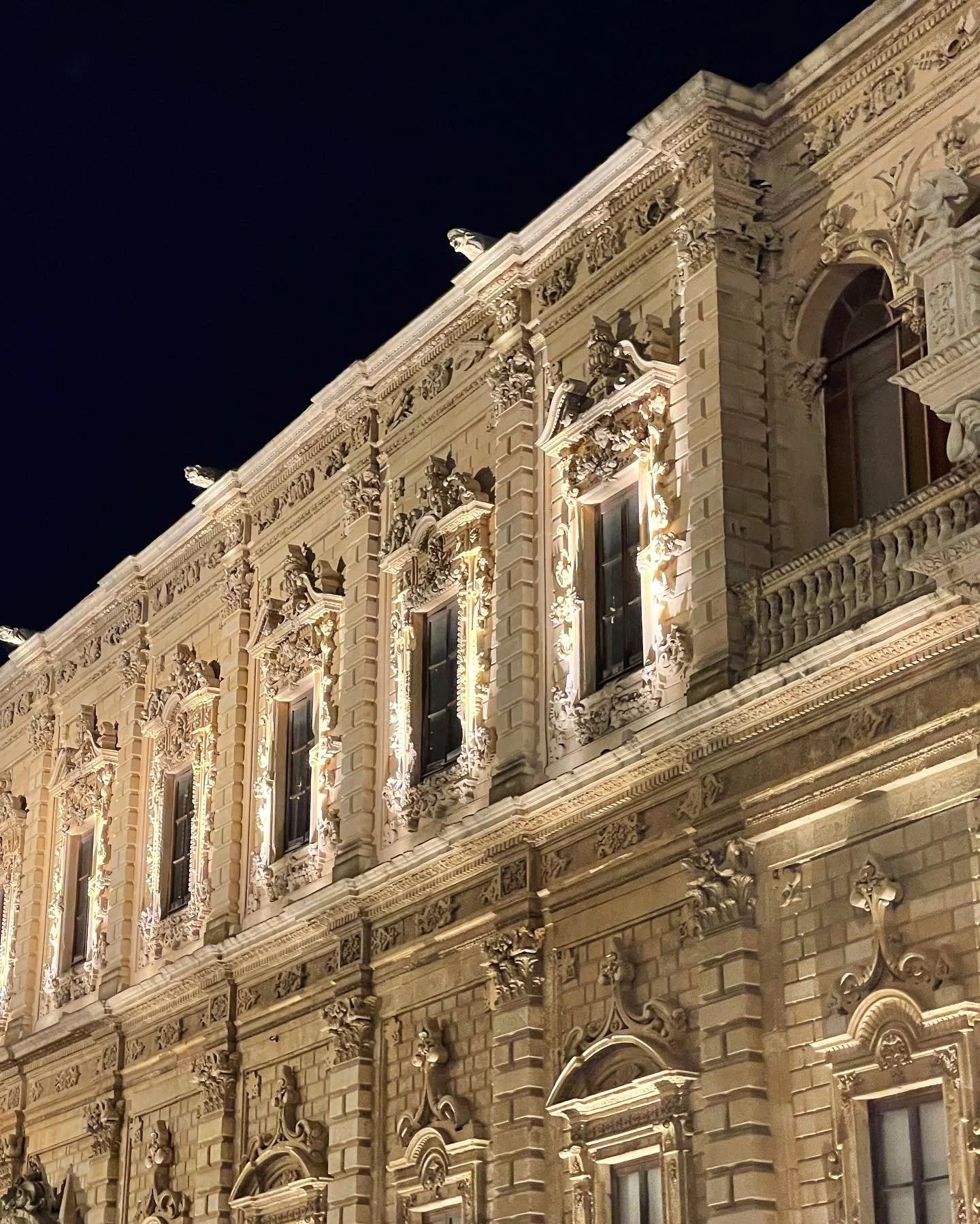
We spent so much time at the beach during our stay in the Bari/Brindisi areas ( A Week in Puglia - Part I ) that we chose not to venture out of Lecce during our three day stay. However, Gallipoli and Otranto would be good options if you are looking to venture out of town.
MASSERIA MANTATELURE
Never ending seemed the hours we spent researching the area in the weeks leading up to our trip. And when we checked into our hotel in Lecce, we knew it was time well spent.
Ideally located within a ten-minute walk to the city’s most important landmarks, Masseria Mantatelurè, which means “King’s Mantle” in the local dialect, is designed and owned by Marco Cimmino. The intimate oasis offers the kind of experience one might hope for from a hotel whose owner/designer keeps a residence on the property, which Marco does. Chic, understated, and cozy, the attention to detail within the walls of this 16th-century restored palazzo is palpable. Everything from the serving table in the breakfast room to the custom cabinets in the lobby and the recessed Bang & Olufsen sound system fuses the old with the new, my favorite design style.
As property manager, Marta Nocco, greeted us with genuine regard for our well-being and eagerness to assist us, behind her, was a woman preparing the pastries and desserts we would later enjoy. This quickly set the tone for what felt like home away from home. Marco, an avid baker (and owner of the nearby restaurant Pescheria Con Cottura), wanted to share that passion with his guests, and this set the tone of our stay.
The garden was beautiful, even at the peak of a sweltering summer. Our room, accessible from the street through a romantic exterior foyer, was very spacious, with a spa tub and sitting room. Everything about this elegant hotel, with five more well-appointed rooms and three apartments, is welcoming. And in an effort to provide a quiet, intimate experience, please note that Mantateluré does not accept children under the age of eleven.
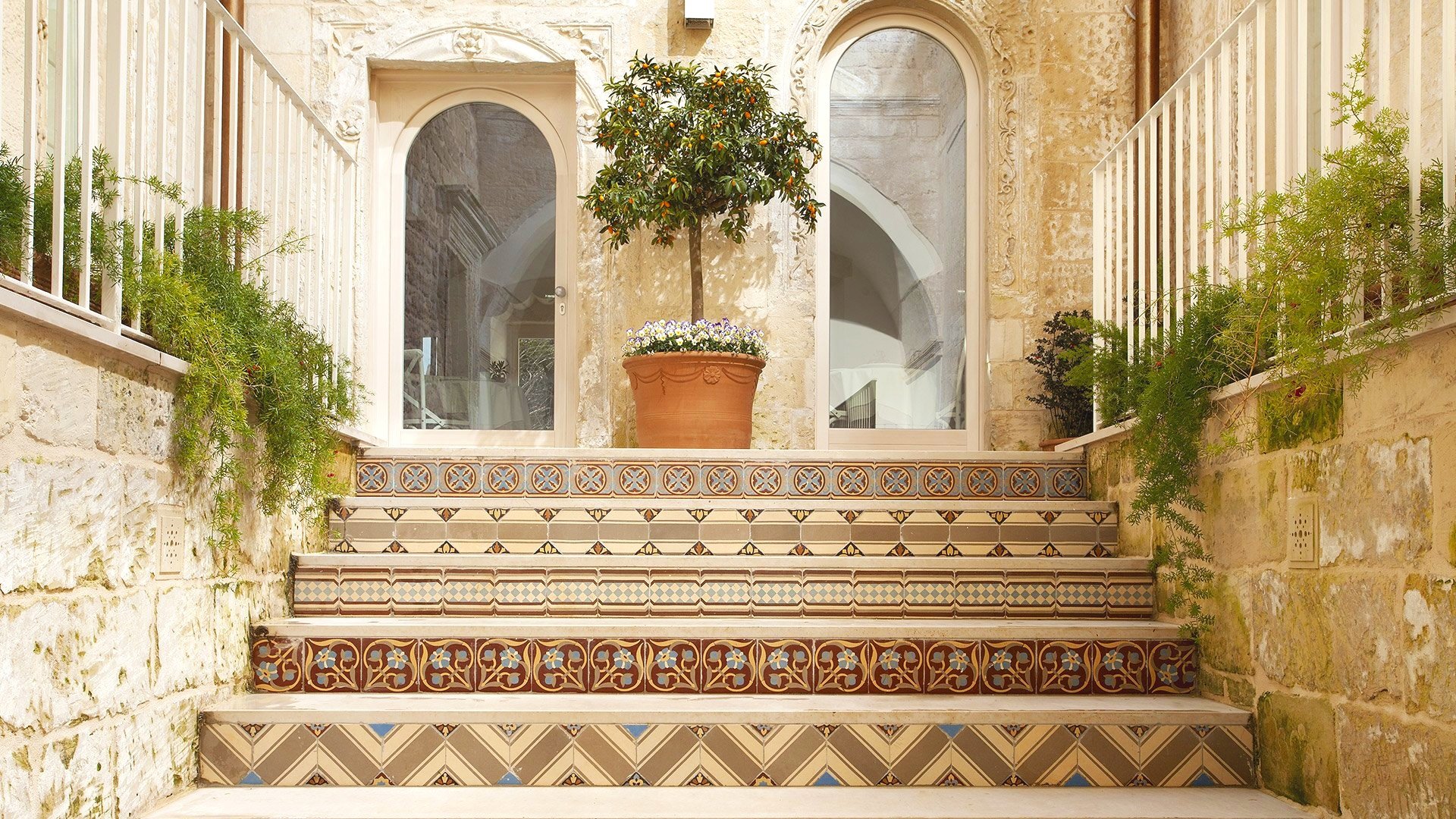

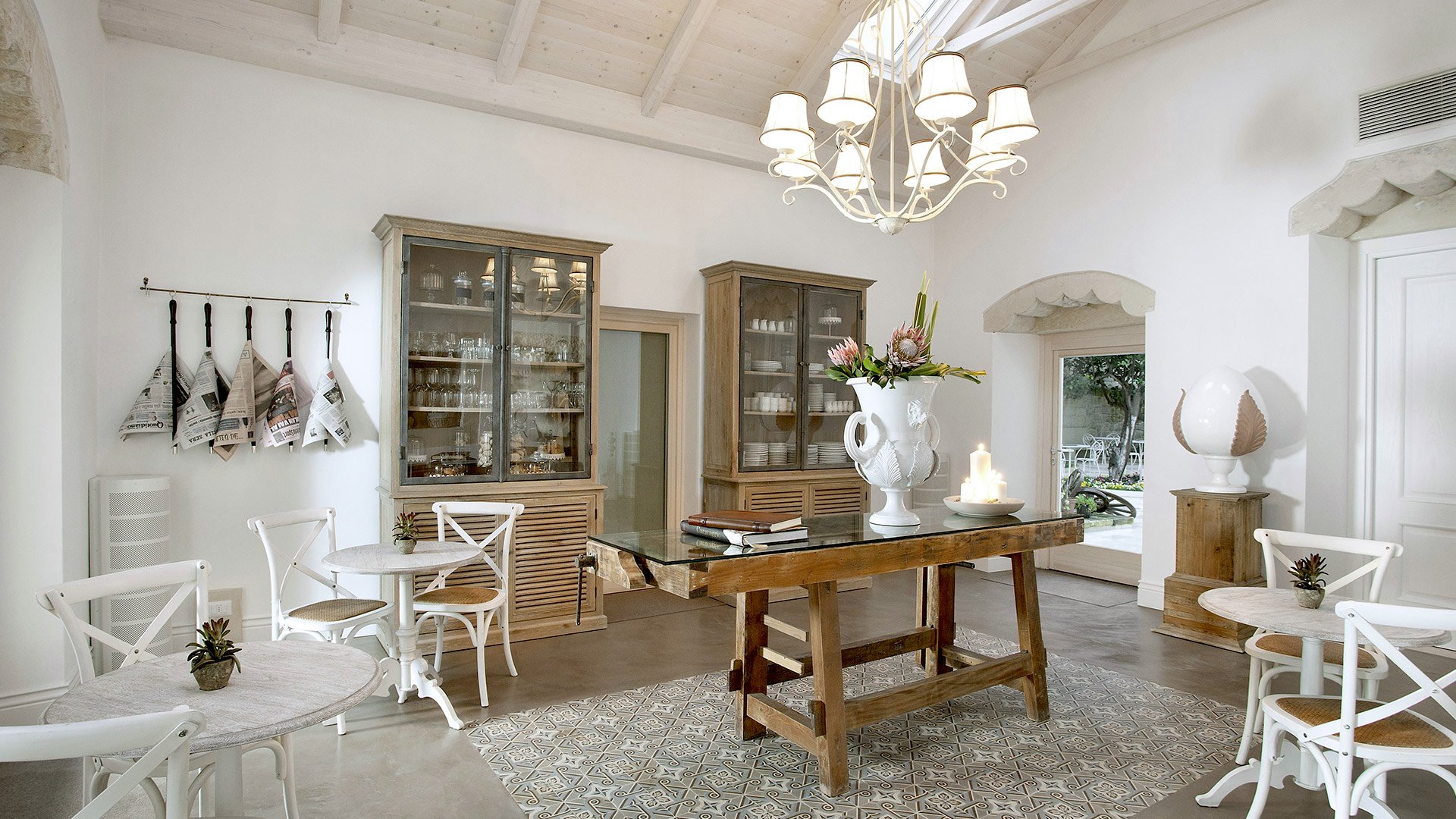
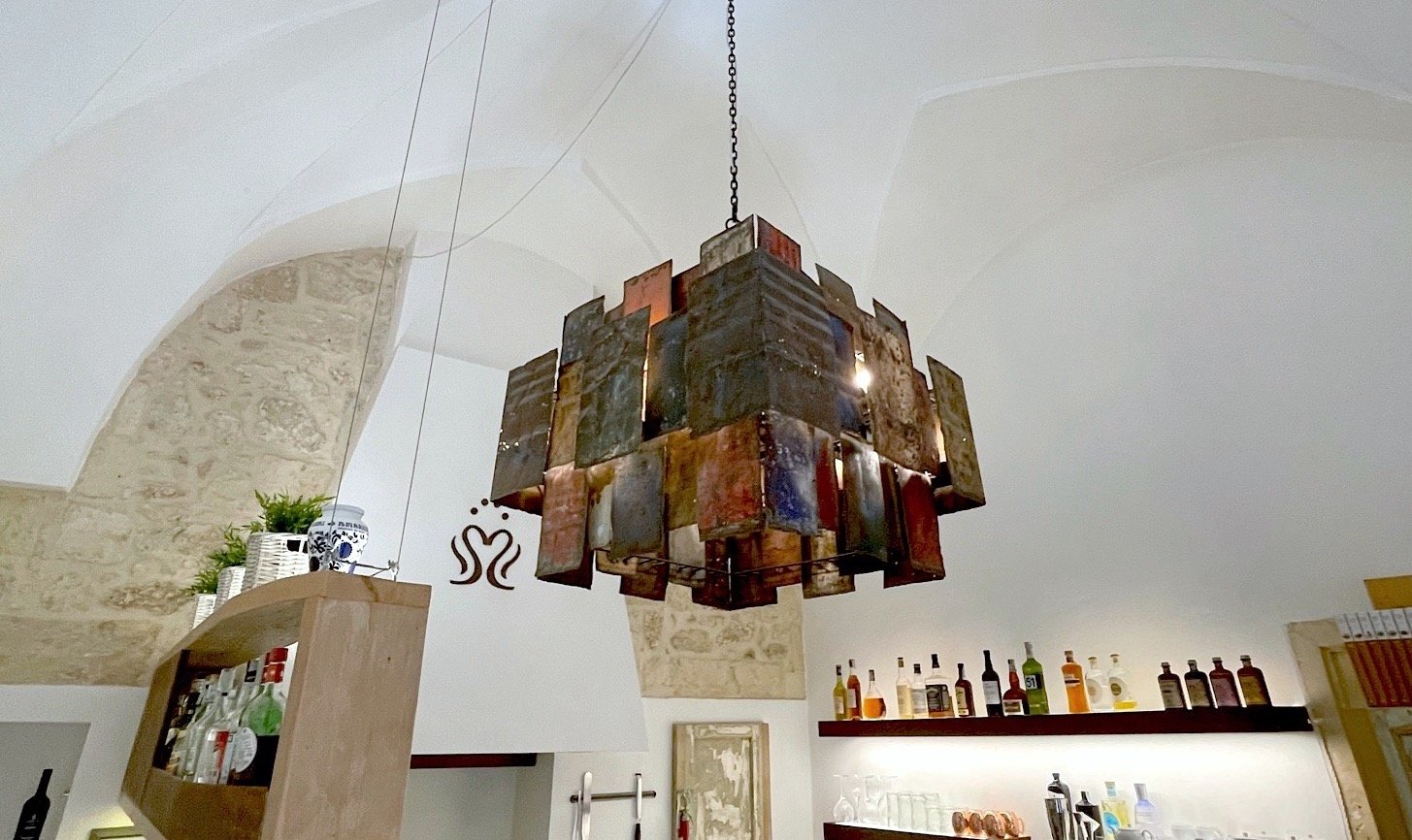

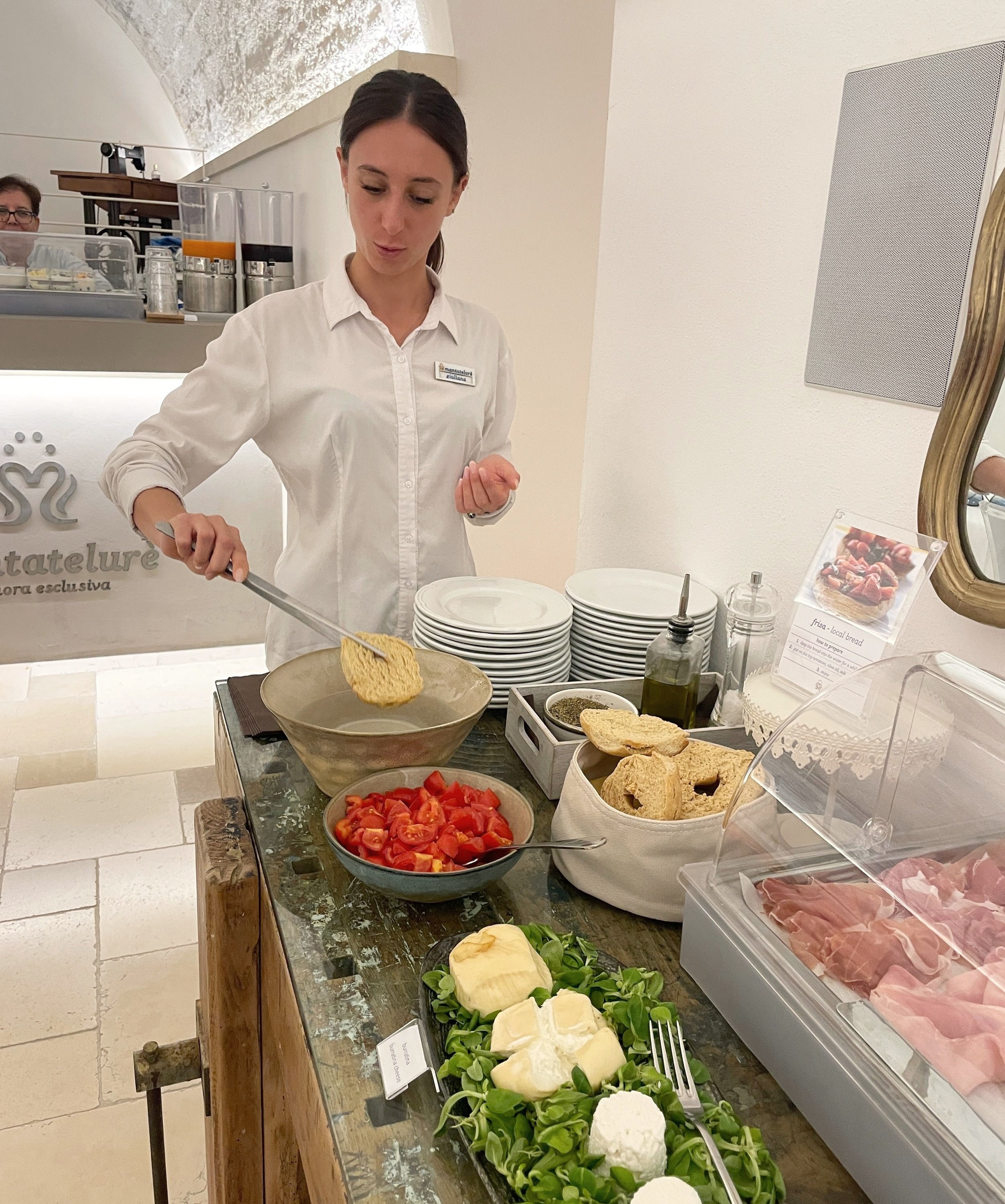
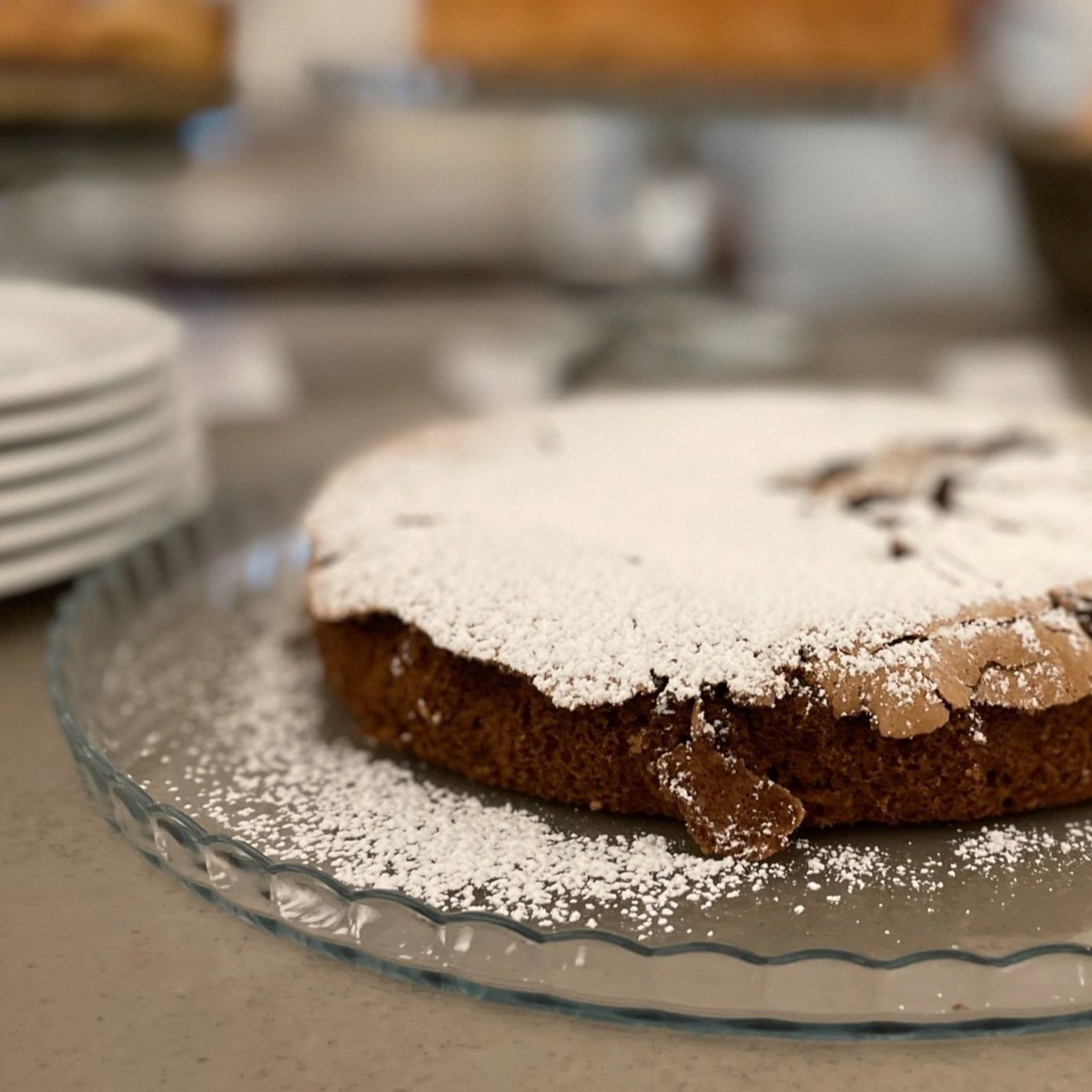
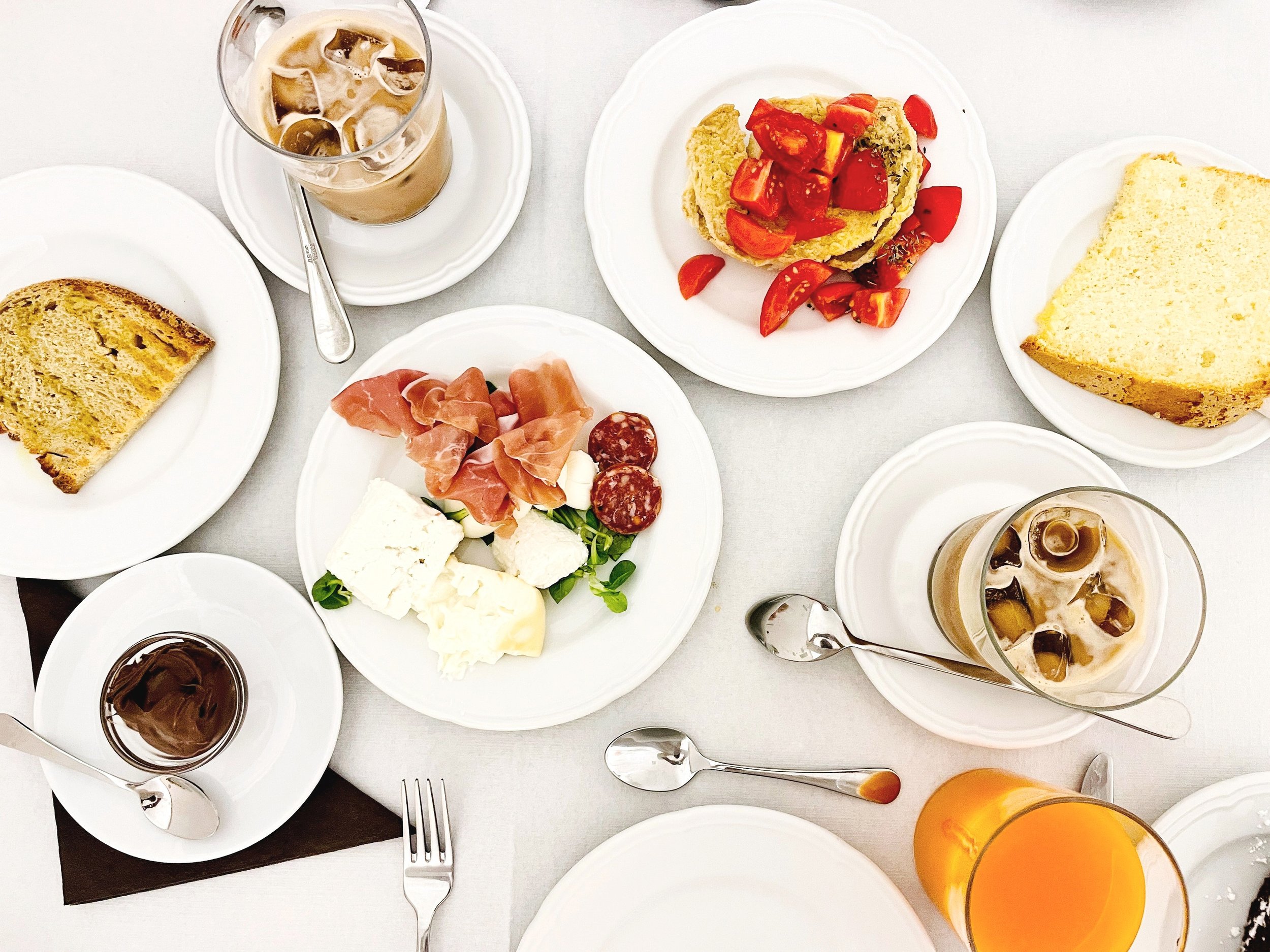
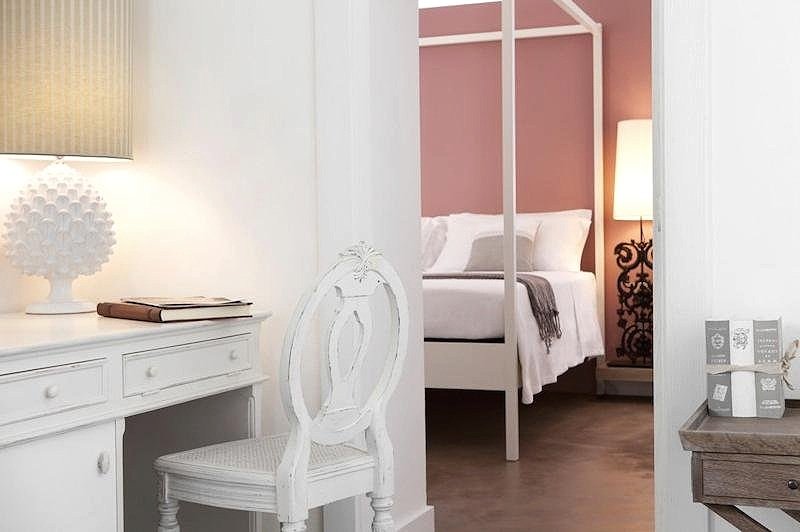


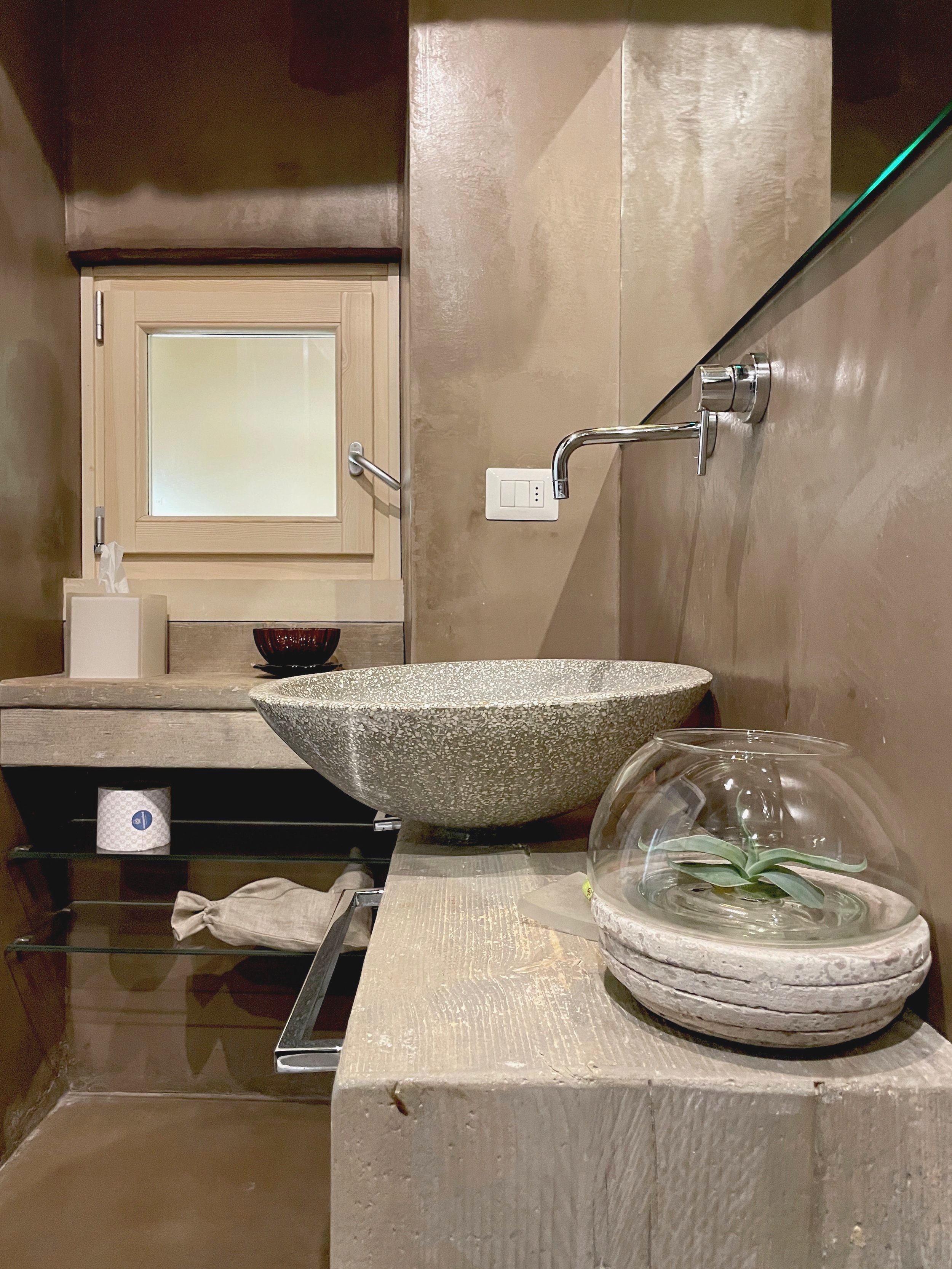
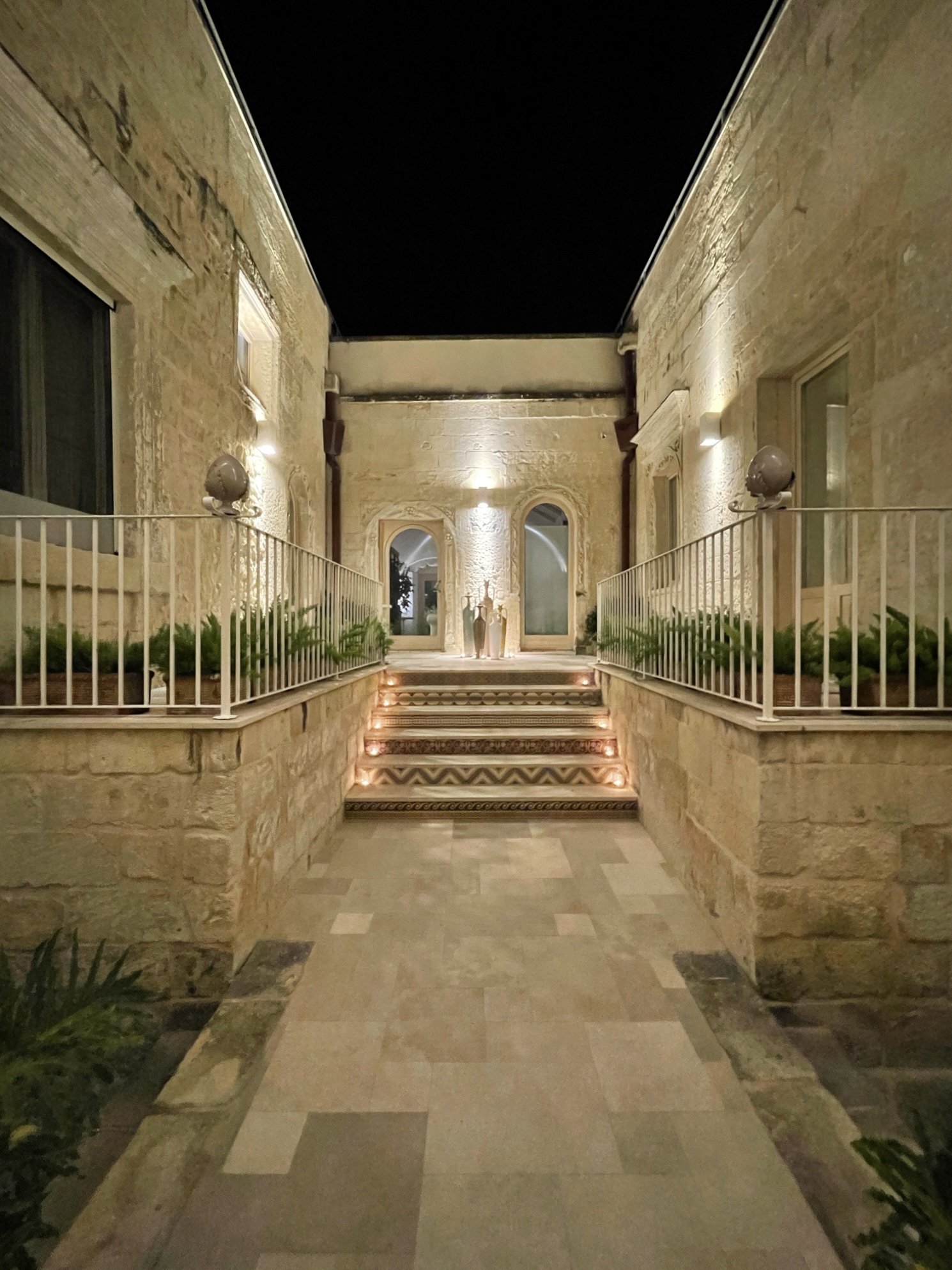
DINING
It is not difficult to find excellent cuisine in Puglia, where the food is straightforward, meaning that the quality of local and seasonal ingredients is what’s at the core. As one might expect from the longest strip of coastline in all of Italy, seafood is naturally the star player.
Ambiance is as essential to me as cuisine, but to my husband, born and raised in Rome, food is everything. The great news is that neither of us was disappointed in Puglia.
La Locanda sul Porto in Monopoli is a lovely seaside restaurant with outdoor seating, La Locanda offers cooked and raw fish and several pasta dishes made primarily with seafood. We had the catch of the day, which was as delicious as it was beautiful.
Our evening at La Taverna di Umberto in Fasano left its mark on my heart because of the atmosphere. One of the things I love most about dining in Italy, especially in the summer months, is watching children, teens, and adults enjoying an ageless feast together under a moonlit evening without a care for the clock. I witnessed this at La Taverna, where the relaxed feel and ease with which the staff performed their job matched the quality of the food.
Both quaint and trendy, Osteria bell’Italia in Cisternino is a backstreet restaurant offering local and international gastronomy with a modern twist. Though the restaurant was at capacity and service slow, any frustration we may have felt quickly dissipated when our food arrived. I highly recommend this unique Osteria.
Located in the historic center of Locorotondo, Bina Ristorante lives within the walls of an 18th-century building with stunning cross-vaulted ceilings. A perfect fusion of past and present, it is embellished by clean white lines, offering its discerning clientele a beautiful setting and exquisite cuisine. The wine list is extensive, and the menu includes handmade pasta, an array of meats, fish, tartare, and desserts. The superb presentation is on par with the quality of the food.
Il Vico del Gusto is ideally situated in the heart of Lecce, just steps from the Basilica di Santa Croce. If you are a foodie, you will love the seared octopus, tuna tartare, and tagliolini prepared with local fish. While the food and wine list were superb, the staff seemed to be on edge, running from table to table, which made our experience less than ideal.
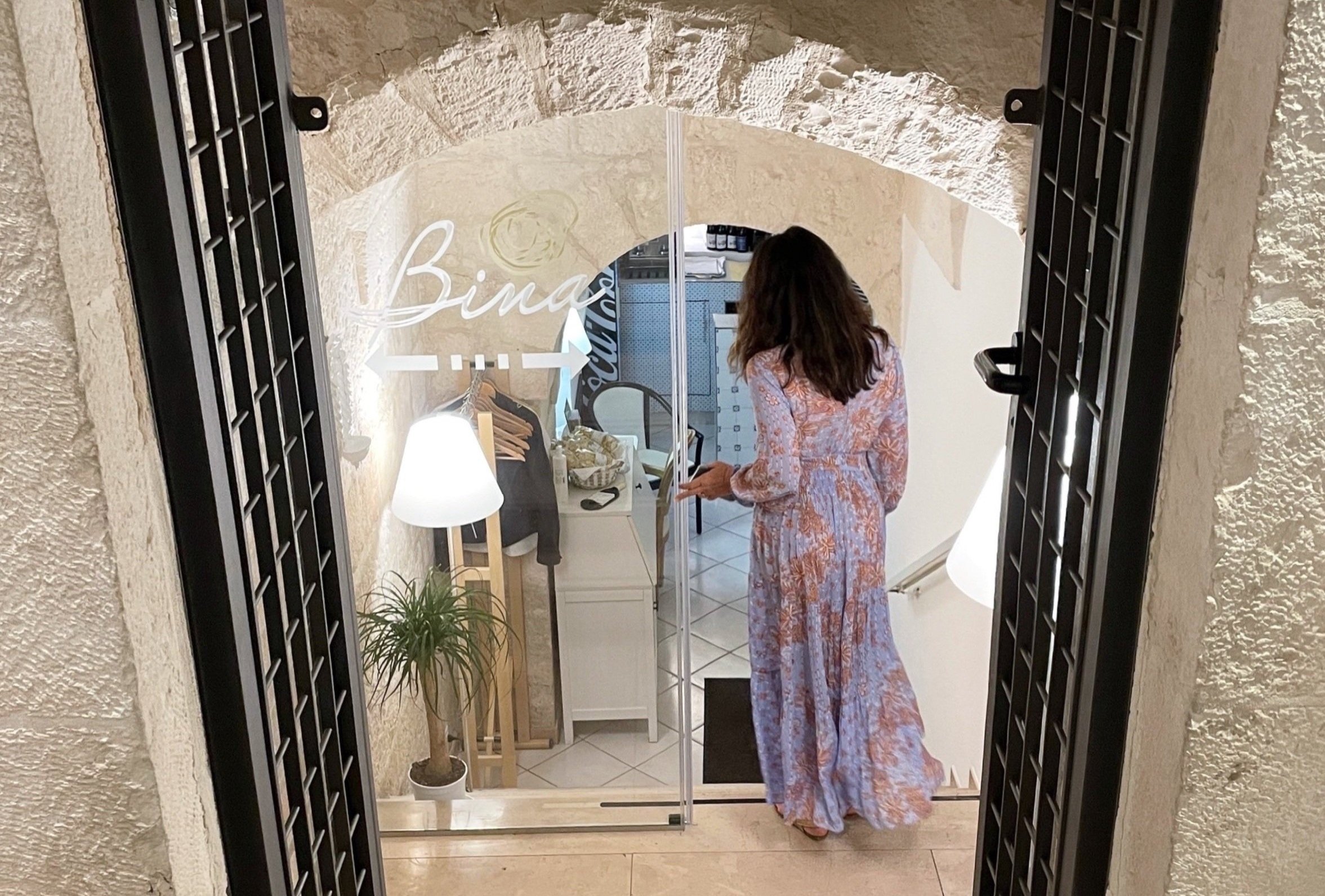
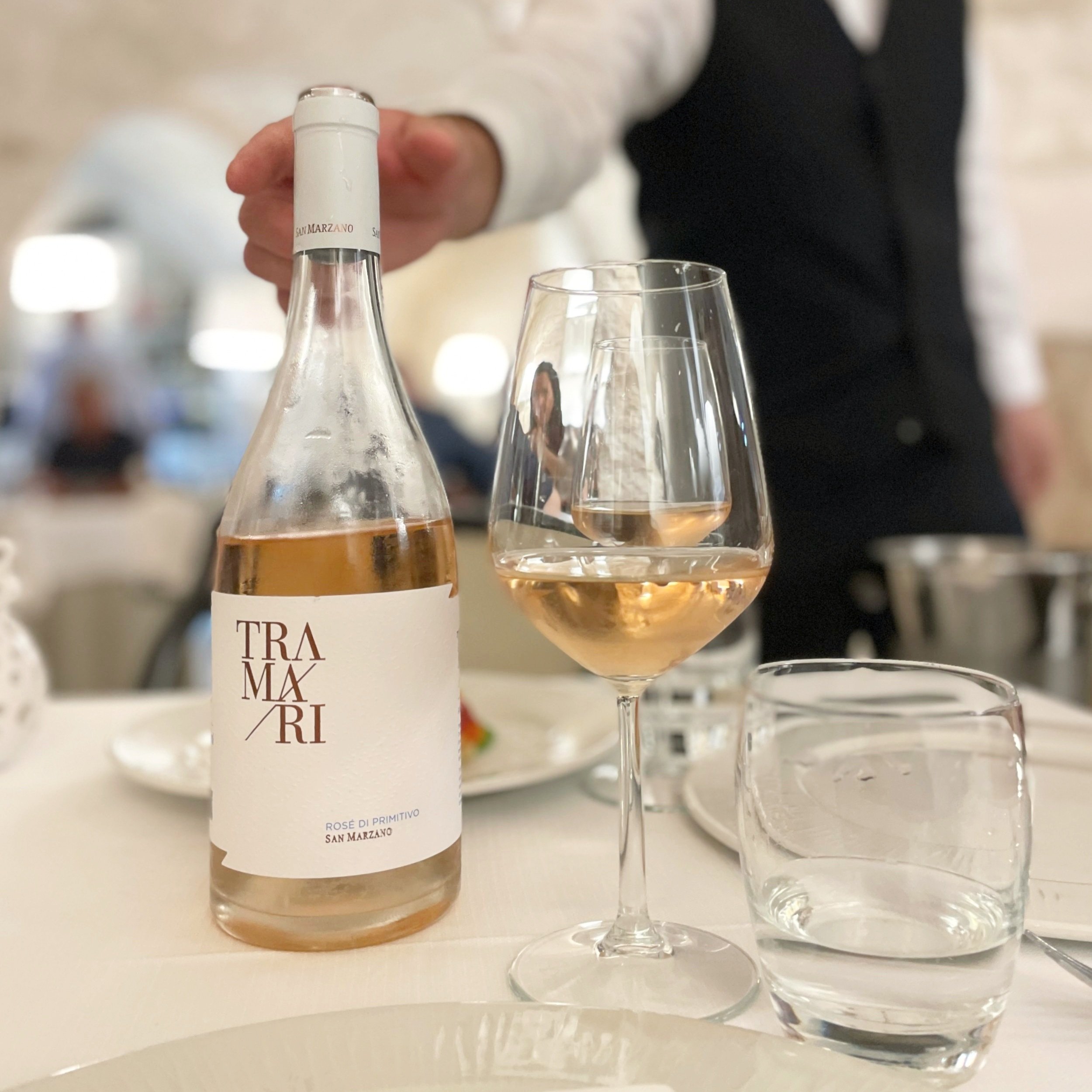




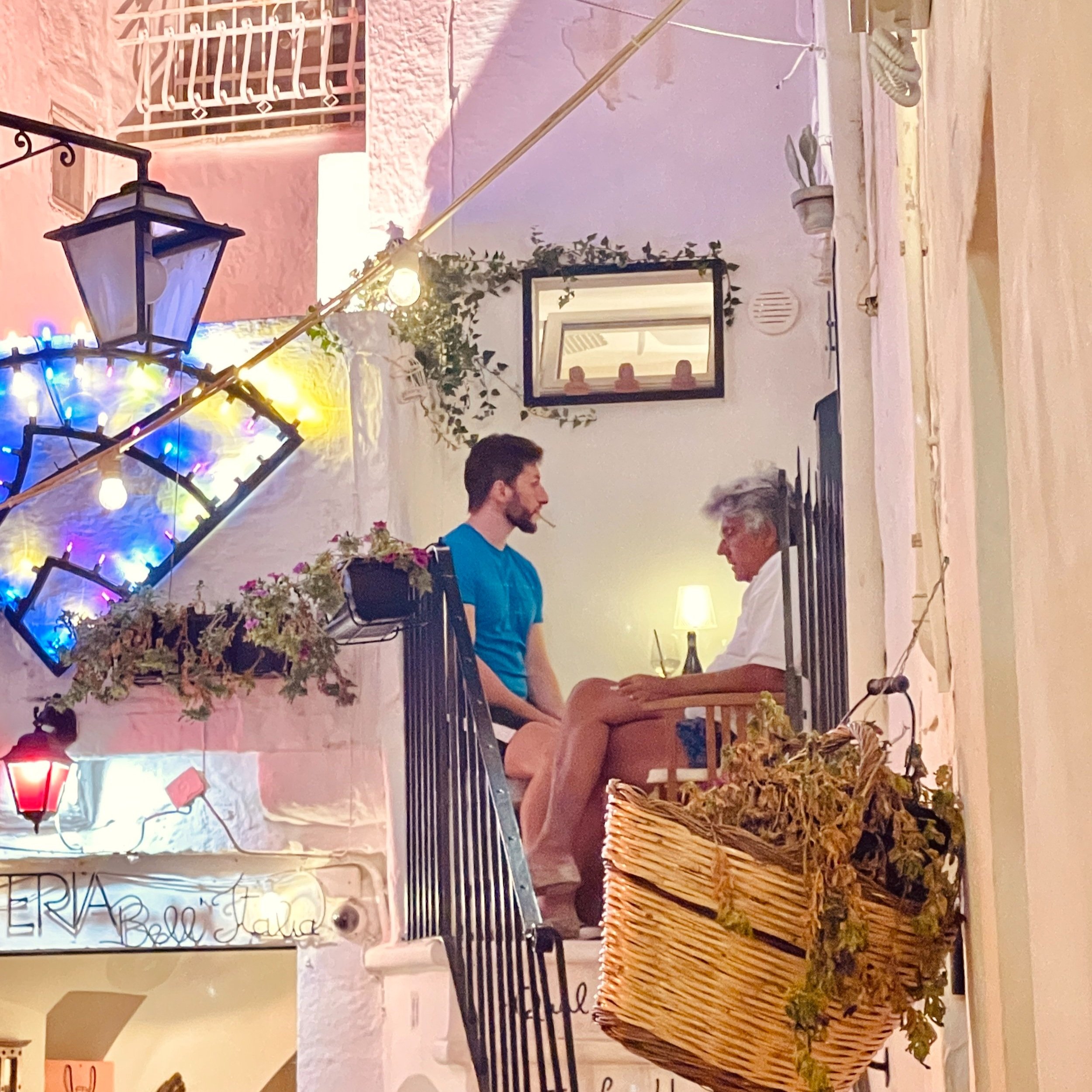
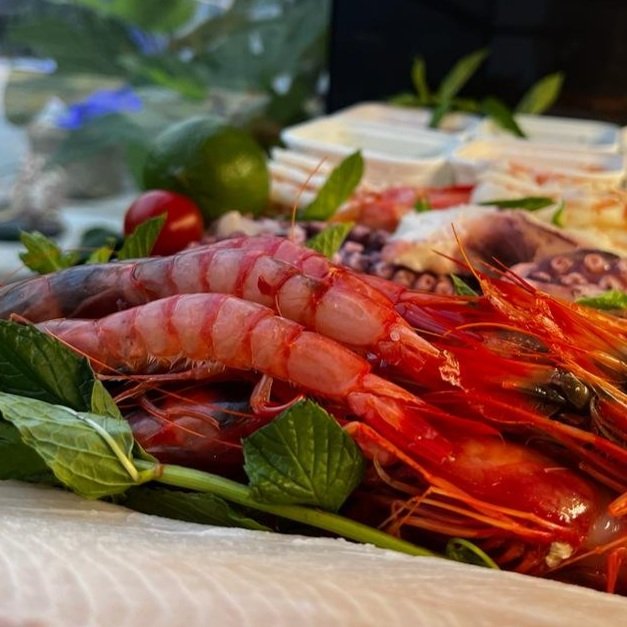
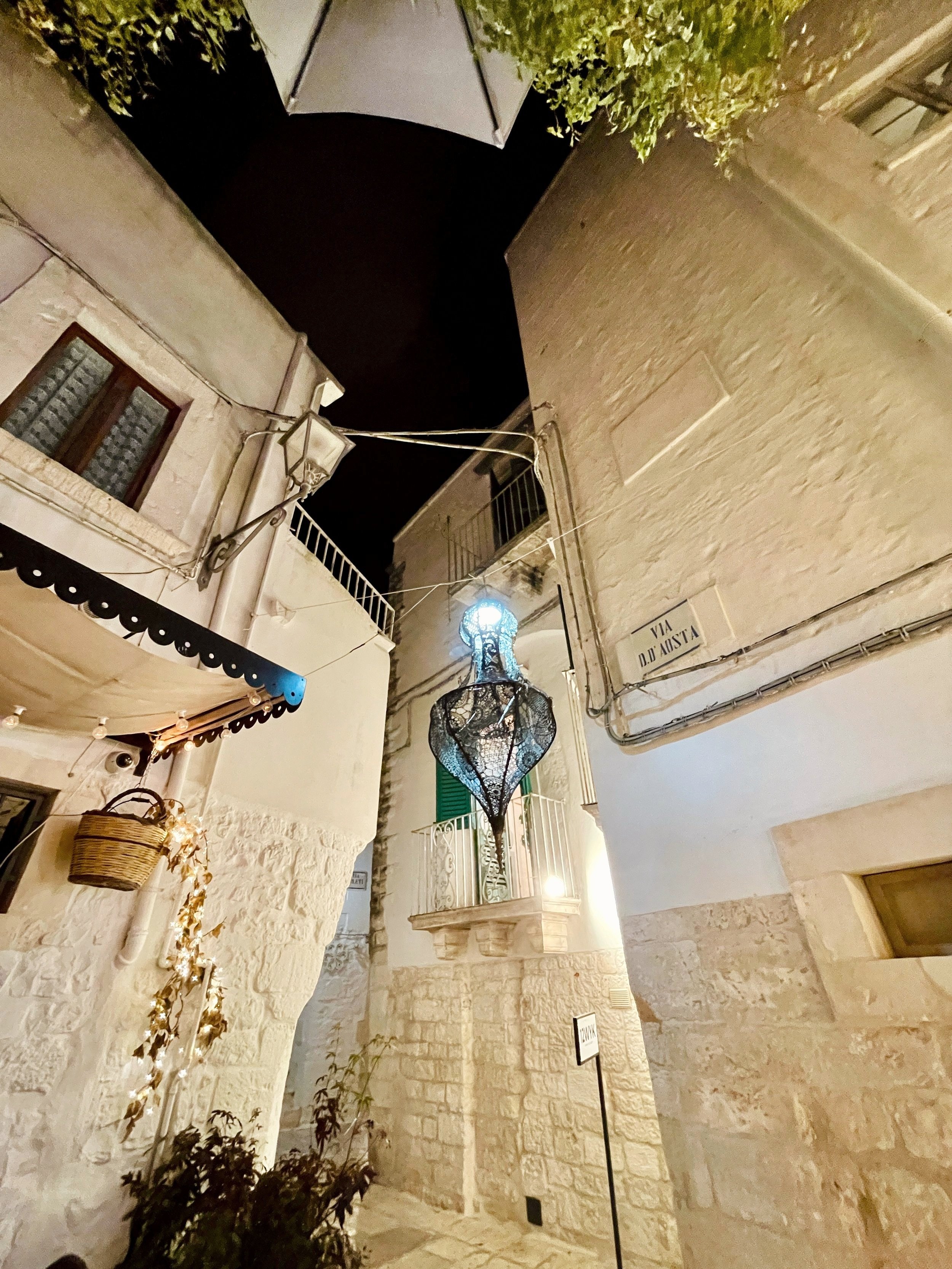
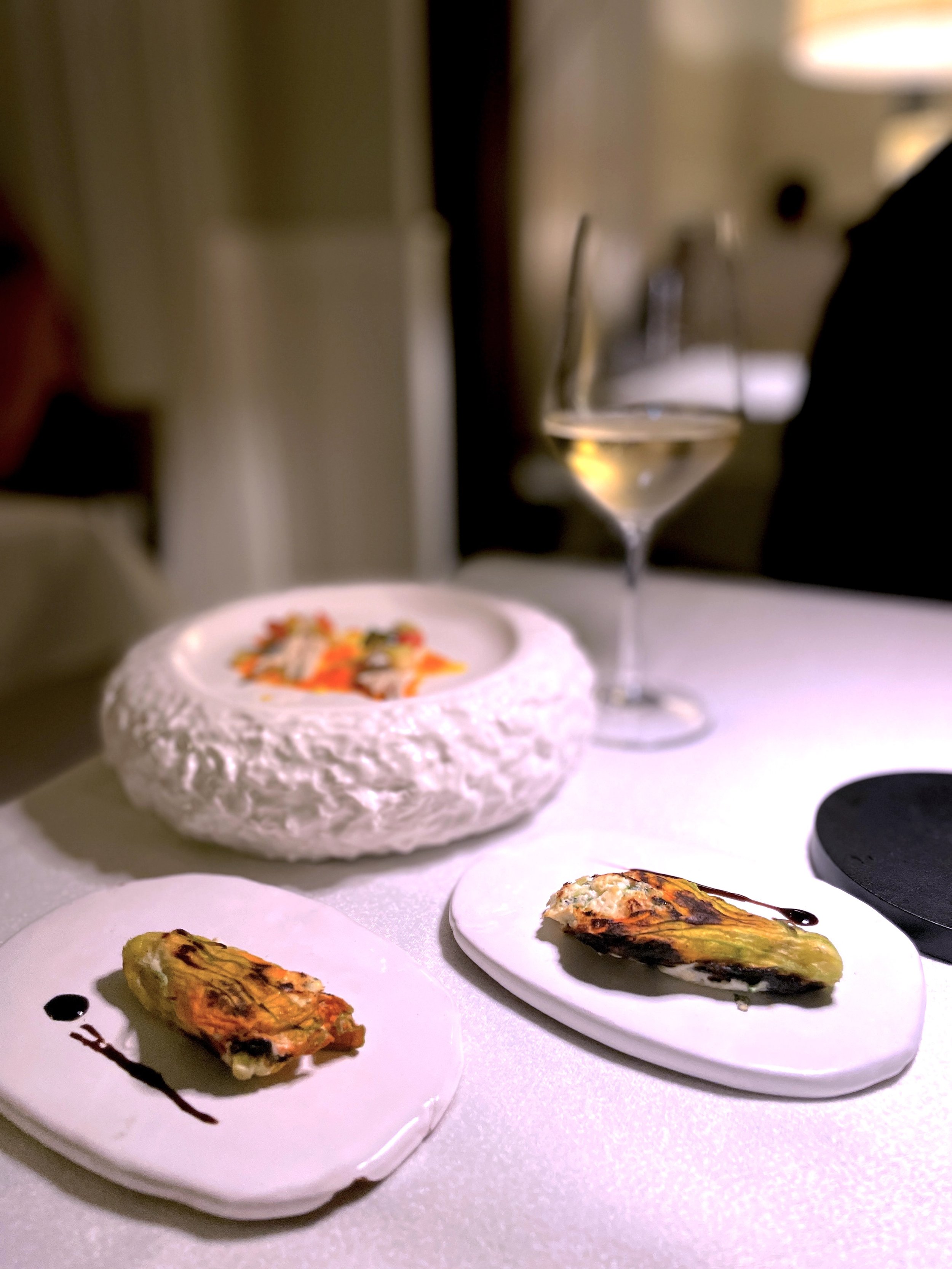
I hope that these tips aid you in planning your next vacation in Puglia. Buon viaggio!
Photos: property of Designs by Alina.



